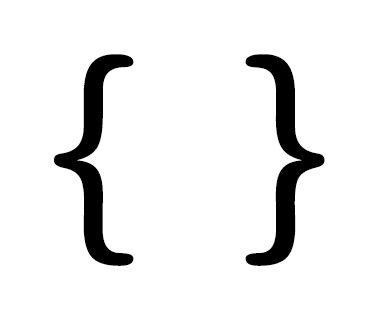· Chuck Conway · Application Design · 5 min read
Codifying the Secret Sauce
Codifying the secret sauce is instrumental in writing maintainable and successful applications.

Each application has its secret sauce, it’s reason for existing. Codifying the secret sauce is instrumental in writing maintainable and successful applications.
Wait. What is codifying? Patience my friend, we’ll get there.
First let’s hypothesize:
You’ve just been promoted to Lead Software Engineer (Congratulations!). Your CEO’s first task is creating a new product for the company. It’s a ground-up accounting application. The executives feel having a custom accounting solution will give them an edge on the competition.
A few months have passed, most of the cross-cutting concerns are developed (yay you!). The team is now focused on the yummy goodness of the application: the business domain (the secret sauce). This is where codifying the secret sauce begins.
Codifying, is putting structure around an essential concept in the business domain.
In accounting, the price (P) earning (E) ratio (P/E Ratio) is a measurement of earnings for a company. A high P/E ratio suggests high earnings growth in the future. The P/E ratio is calculated by taking the market value per share (share price) divided by the earnings per share (profit – dividends / # of outstanding shares).
A simple, and I argue, naive implementation:
public class Metric
{
public string Name { get; set; }
public decimal Value {get; set}
public int Order {get; set;}
}
public class AccountingSummary
{
public Metric[] GetMetrics(decimal price, decimal earnings)
{
var priceEarningsRatio = price/earnings;
var priceEarningsRatioMetric = new Metric
{
Name = "P/E Ratio",
Value = priceEarningsRatio,
Order = 0
}
return new [] {priceEarningsRatioMetric};
}
}
If this is only used one place, this is fine. What if you use the P/E ratio in other areas?
Like here in PriceEarnings.cs
var priceEarningsRatio = price/earnings;
And here in AccountSummary.cs
var priceEarningsRatio = price/earnings;
And over here in StockSummary.cs
var priceEarningsRatio = price/earnings;
The P/E Ratio is core to this application, but how it’s implemented, hardcoded in various places, makes the importance of the P/E Ratio lost in a sea of code. It’s just another tree in the forest.
You also open to the risk of changing the ratio in one place but not the other. This may throw off downstream calculations. These types of errors are notoriously difficult to find.
Often testers will assume if it works in one area, it’s correct in all areas. Why wouldn’t the application use the same code to generate the P/E Ratio for the entire application? Isn’t this the point of Object Oriented Programming?
I can imagine an error like this making it into production and not discovered until a visit from your executive who demands to know why the SEC’s P/E Ratio calculations are different from what the company filed. That’s not a great place to be.
Let’s revisit our P/E ratio implementation and to see how we can improve upon our first attempt.
In accounting systems formulas are a thing, let’s put structure around formulas by adding an interface:
public interface IFormula
{
decimal Calculate<T>(T model);
}
Each formula now is implemented with this interface giving us consistency and predictability.
Here’s our improved P/E Ratio after implementing our interface:
We’ve added a PriceEarningsModel to pass the needed data into our Calculate method.
public class PriceEarningsModel
{
public decimal Price {get; set;}
public decimal Earnings {get; set;}
}
Using our PriceEarningsModel, we’ve created an implementation of the IFormula interface for the P/E Ratio.
public class PriceEarningsRatioFormula : IFormula
{
public decimal Calculate<PriceEarningsModel>(PriceEarningsModel model)
{
return model.Price / model.Earnings;
}
}
We’ve now codified the P/E Ratio. It’s a first-class concept in our application. We can use it anywhere. It’s testable, and a change impacts the entire application.
As a reminder, here’s the implementation we began with:
public class Metric
{
public string Name { get; set; }
public decimal Value {get; set}
public int Order {get; set;}
}
public class AccountingSummary
{
public Metric[] GetMetrics(decimal price, decimal earnings)
{
var priceEarningsRatio = price/earnings;
var priceEarningsRatioMetric = new Metric
{
Name = "P/E Ratio",
Value = priceEarningsRatio,
Order = 0
}
return new [] {priceEarningsRatioMetric};
}
}
It’s simple and gets the job done. The problem is the P/E Ratio, which is a core concept in our accounting application doesn’t stand out. Engineers not familiar with the application or the business domain won’t understand its importance.
Our improved implementation uses our new P/E Ratio class. We inject the PriceEarningsRatioFormula class into our AccountSummary class.
We replace our hardcoded P/E Ratio with our new PriceEarningsRatioFormula class.
public class AccountingSummary
{
private PriceEarningsRatioFormula _peRatio;
public AccountingSummary(PriceEarningsRatioFormula peRatio)
{
_peRatio = peRatio;
}
public Metric[] GetMetrics(decimal price, decimal earnings)
{
var priceEarningsRatio = _peRatio.Calculate(new PriceEarningsModel
{
Price = price,
Earnings = earnings
});
var priceEarningsRatioMetric = new Metric
{
Name = "P/E Ratio",
Value = priceEarningsRatio,
Order = 0
}
return new [] {priceEarningsRatioMetric};
}
}
One could argue there is a bit more lifting with the PriceEarningsRationFormula over the previous implementation and I’d agree. There is a bit more ceremony but the benefits are well worth the small increase in code and in ceremony.
First, we gain the ability to change the P/E ratio for the entire application. We also have a single implementation to debug if defects arise.
Lastly, we’ve codified the concept of the PriceEarningsRatioFormula in the application. When a new engineer joins the team, they’ll know formulas are essential to the application and the business domain.
There are other methods of codifying (encapsulate) the domain, such as microservices and assemblies. Each approach has its pros and cons, you and your team will have to decide what’s best for your application.
Ensconcing key domain concepts in classes and interfaces creates reusable components and conceptual boundaries. Making an application easier to reason with, reducing defects and lowering the barriers to onboarding new engineers.




